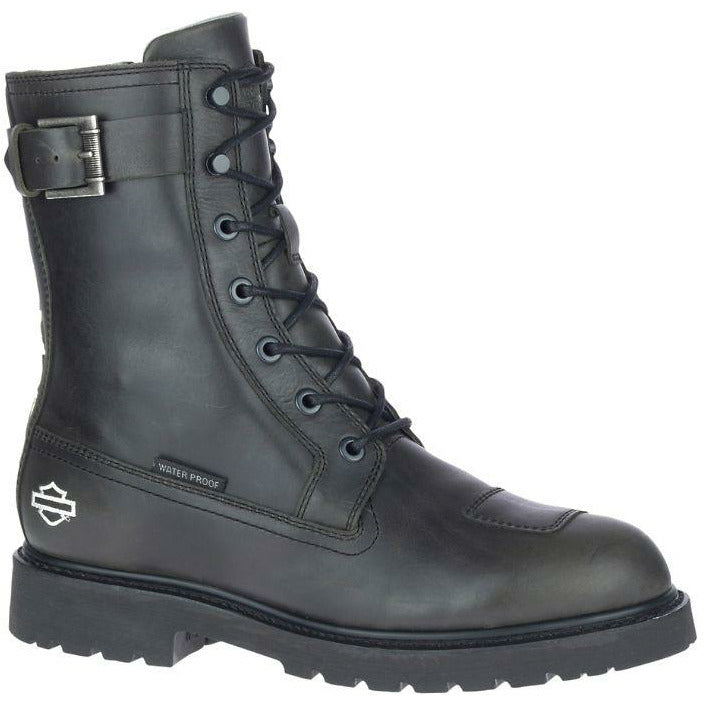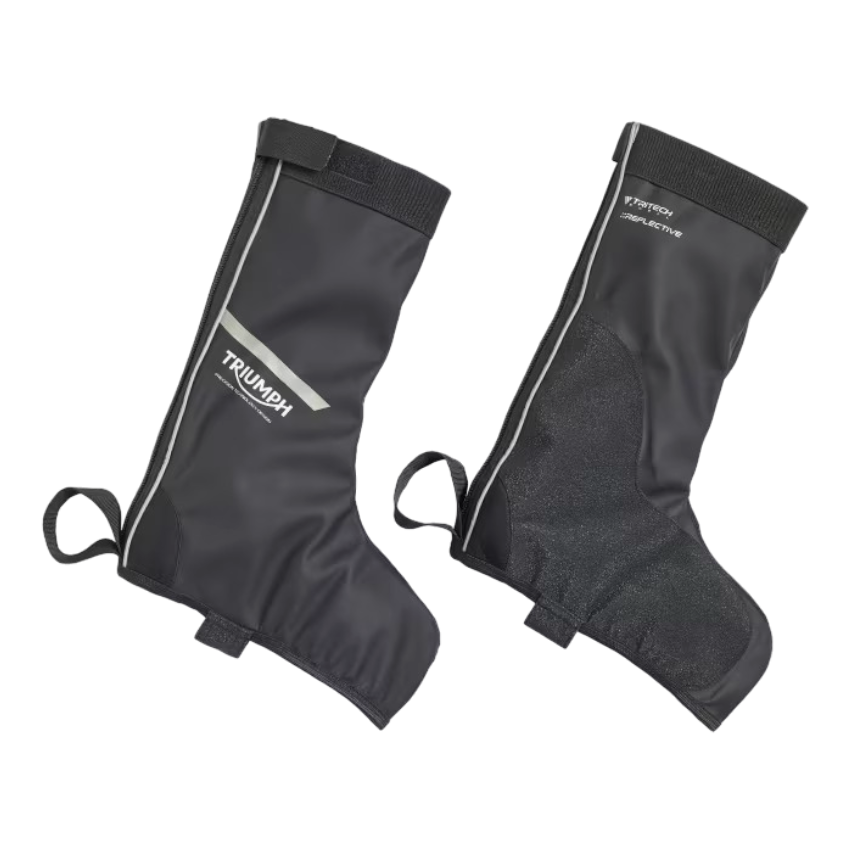The Evolution of Motorcycle Helmets: Classic to High-Tech
-
Classic Motorcycle Helmets:
- Early leather and cork helmets provided minimal protection.
- DOT and ECE standards improved helmet design and construction.
-
The Role of Racing in Helmet Development:
- Racing pushed the boundaries of helmet technology.
- Full-face helmets became the standard for all motorcyclists.
-
Advancements in Helmet Technology:
- Advanced materials like fiberglass and carbon fiber.
- Ventilation systems improved airflow and comfort.
- Modular helmets offered versatility and convenience.
-
Safety Features and Regulations:
- MIPS technology reduces rotational forces during impact.
- Stringent regulations and standards ensure helmet safety.
-
Smart Helmets and Connectivity:
- Bluetooth connectivity for communication and navigation.
- GPS and navigation systems provide turn-by-turn directions.
- Helmet cameras capture and share riding experiences.
-
The Future of Motorcycle Helmets:
- Ongoing research and development for improved safety and comfort.
- Integration of advanced sensors, AI, and AR/HUD systems.
Title: The Evolution of Motorcycle Helmets: From Classic to High-Tech
Introduction:
Motorcycle helmets have undergone a remarkable transformation over time, driven by technological advancements, safety regulations, and the influence of racing. From the early leather and cork helmets to today's high-tech, smart helmets, the evolution of motorcycle helmets reflects the ever-increasing focus on safety, comfort, and innovation in the world of motorcycling. This article explores the fascinating journey of motorcycle helmets, from their classic origins to their cutting-edge incarnations.Classic Motorcycle Helmets:
In the early days of motorcycling, helmets were rudimentary, often made of leather or cork, and provided minimal protection. The iconic "brain bucket" helmet emerged in the 1920s, featuring a hard outer shell and a padded interior. These helmets offered improved protection but lacked comfort and ventilation. The introduction of DOT (Department of Transportation) and ECE (Economic Commission for Europe) standards in the 1970s set minimum safety requirements for motorcycle helmets, leading to significant improvements in helmet design and construction.The Role of Racing in Helmet Development:
"Racing has been a catalyst for innovation in motorcycle helmet technology. The relentless pursuit of speed and safety on the racetrack has pushed the boundaries of helmet design, materials, and safety features." - Mark Webber, MotoGP Champion
Racing has played a pivotal role in the development of motorcycle helmets. The relentless pursuit of speed and safety on the racetrack has pushed the boundaries of helmet technology. Racing helmets prioritized lightweight, aerodynamic designs, and incorporated advanced materials and innovative safety features. The full-face helmet, once exclusive to racing, eventually became the standard for all motorcyclists, offering superior protection for the entire face and head.

Title: HARLEY DAVIDSON® BROSNER 8" MEN'S LACE WITH ZIP BOOT
Price: £149.99
SHOP NOW
Advancements in Helmet Technology:
The introduction of advanced materials, such as fiberglass and carbon fiber, revolutionized helmet construction. These materials offered increased strength, lightness, and impact resistance. The integration of ventilation systems improved airflow, reducing fogging and enhancing rider comfort. Modular helmets were introduced, featuring removable chin bars, providing versatility and convenience for different riding scenarios.Safety Features and Regulations:
As awareness of motorcycle safety grew, helmet manufacturers invested in developing advanced safety features. MIPS (Multi-directional Impact Protection System) became an essential component, reducing rotational forces during an impact. Stringent regulations and standards were implemented worldwide, ensuring that helmets met specific safety criteria. Helmet safety ratings and certifications became essential benchmarks for riders to evaluate helmet performance.Smart Helmets and Connectivity:
In recent years, the rise of smart helmets has brought connectivity and technology to the world of motorcycle helmets. Bluetooth connectivity allows riders to communicate with other riders, listen to music, and make phone calls while riding. GPS and navigation systems integrated into helmets provide turn-by-turn directions, enhancing the riding experience. Helmet cameras enable riders to capture their rides and share them with others.The Future of Motorcycle Helmets:
The future of motorcycle helmets holds immense potential. Ongoing research and development in helmet technology promise even greater comfort, safety, and customization. The integration of advanced sensors and artificial intelligence (AI) will provide riders with real-time information and enhance safety. Augmented reality (AR) and heads-up display (HUD) systems may become commonplace, projecting vital riding information directly onto the helmet's visor.
Title: TRIUMPH RAIN OVERBOOTS
Price: £50.00
SHOP NOW
Conclusion:
The evolution of motorcycle helmets reflects the continuous pursuit of safety, innovation, and comfort in the world of motorcycling. From the early leather helmets to today's smart, high-tech helmets, the transformation has been remarkable. Choosing the right helmet is crucial for every rider, considering factors like fit, comfort, and safety features. Regular maintenance and proper usage are essential to ensure that your helmet remains effective in protecting you in the event of an accident.By following safety guidelines and choosing a helmet that meets your needs, you can maximize your protection and enhance your riding experience. Whether you're a seasoned rider or a beginner, make sure to invest in a quality motorcycle helmet and prioritize safety on every ride.
Outline
- I. Classic Motorcycle Helmets
- II. The Role of Racing in Helmet Development
- III. Advancements in Helmet Technology
- IV. Safety Features and Regulations
- V. Smart Helmets and Connectivity
- VI. The Future of Motorcycle Helmets
- VII. FAQs
FAQs
1. What are the key differences between classic and modern motorcycle helmets?
Classic motorcycle helmets were often made of leather or cork and provided minimal protection. Modern helmets are made of advanced materials such as fiberglass and carbon fiber, offering increased strength, lightness, and impact resistance. They also incorporate advanced safety features like MIPS and improved ventilation systems.
2. How has racing influenced the development of motorcycle helmets?
Racing has been a driving force in the development of motorcycle helmets, pushing the boundaries of helmet technology and safety. Racing helmets prioritize lightweight, aerodynamic designs, advanced materials, and innovative safety features. The full-face helmet, once exclusive to racing, became the standard for all motorcyclists due to its superior protection.
3. What are the different types of motorcycle helmets available?
There are various types of motorcycle helmets available, including full-face, open-face, modular, dual-sport, and off-road helmets. Full-face helmets offer the most comprehensive protection, while open-face helmets provide more airflow and visibility. Modular helmets feature removable chin bars for versatility, and dual-sport and off-road helmets are designed for adventure riding and trail use.
4. What safety features should I look for when choosing a motorcycle helmet?
When selecting a motorcycle helmet, consider safety features like MIPS (Multi-directional Impact Protection System), a DOT or ECE safety rating, and a snug fit. MIPS reduces rotational forces during an impact, while a safety rating ensures that the helmet meets specific safety standards. A proper fit is crucial for optimal protection, so make sure to try on different helmets to find one that fits your head shape and size.
5. How can I maintain my motorcycle helmet properly?
To ensure the effectiveness and longevity of your motorcycle helmet, regular maintenance is essential. Clean the helmet's exterior with a mild detergent and water, and use a helmet liner or balaclava to absorb sweat and prevent odor. Store your helmet in a cool, dry place away from direct sunlight and extreme temperatures. Periodically inspect the helmet for any damage or wear and tear, and replace it every five to seven years or after a significant impact.
6. What are smart helmets, and what benefits do they offer?
Smart helmets incorporate advanced technology and connectivity features. They often have Bluetooth connectivity, allowing riders to communicate with other riders, listen to music, and make phone calls. Some smart helmets also integrate GPS and navigation systems, providing turn-by-turn directions. Helmet cameras allow riders to capture their rides and share them with others. Smart helmets offer enhanced convenience, safety, and connectivity while riding.
Explore More:
Explore the Rugged Charm: Motorcycle Trousers That'll Take You Places
Jackets That Ride with You: Discover the Ultimate Motorcycle Jackets
Boots That Are Made for Riding: Unleash the Power of Motorcycle Boots
Feel the Legendary Spirit: Explore Our Harley-Davidson Collection
Experience the Ultimate Gear: Explore the World of Motorcycle Apparel